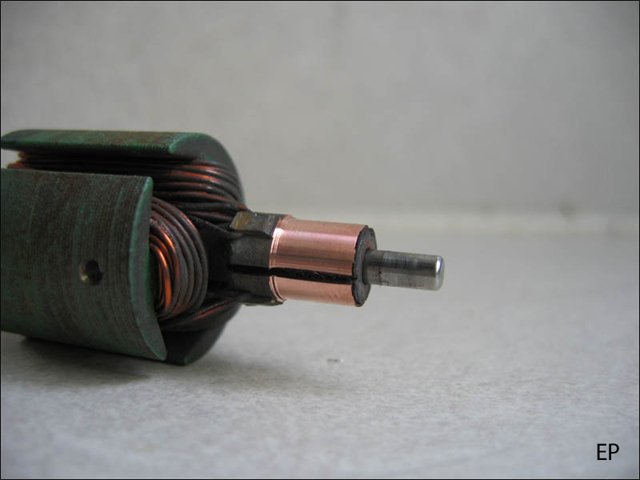Well tonight I figured I would rebuild a couple Comp motors and my practice motor. Being old school Im one of those guys who only run Brushed motors and needing speed still I only run 30 and 35 turn hand wound motors but for my test and tunes and just farting around I have a 35T Integy motorthat I use.
Well my 30T and 35T comp motors went easy. Turned the comms, reseated the brushes and spun them up just to see if they were maintaining their power like before. That was the easy part.
Now came the practice motor, this thing is basically stock motor that all i did was align the hoods and stick some special brushes in. I never even touched the comm before tonight.
I have to say in 15 years of building many different types of motors for all sorts of racing at both little and big type events I have Never seen a comm this bad so I thought it would be a good thing to post and show how important maintenance on machine wound motors can be. This isnt to say Hand wound motors dont need the same touch of love.
Heres the Comm after 8 passes on a Cobra Mod lathe with diamond bit. 1 pole is clean likeit was never run.



You can see that 2 out of the 3 poles werent even touched yet but the bit, this thing was seriously out of round.
Heres another 7 passes


you can now see where the brushes were just jumping on the 2 poles arching the crap out of them. ( the deep pits indicate this )
5 more passes and I finally got the brush groove to show


6 more passes and all 3 poles were finally clean


I have built hundreds of hand out race motors at Trophy/National events for many years and even those have never started out or became as bad as this thing. Im not saying all machine wound Integy or other brands are like this but figured Id show it as an example.
Just food for thought, the next time you think about submerging your scaler or it feels like your 2.2 stalls at the wrong time, you may just want to ask yourself when was the last time you inspected your motor.
Show that thing a little love every now and then and always maximize the performance in it.
And if possible and in the budget when needing a new motor ........ try thinking about one of those Hand wound motors the vendors here offer. Not saying it cant happen to them too but atleast with those there is a little piece of mind that its not just thrown together quick to meet a piece count for the day.
Hope this helps someone ......... "thumbsup"
Well my 30T and 35T comp motors went easy. Turned the comms, reseated the brushes and spun them up just to see if they were maintaining their power like before. That was the easy part.
Now came the practice motor, this thing is basically stock motor that all i did was align the hoods and stick some special brushes in. I never even touched the comm before tonight.
I have to say in 15 years of building many different types of motors for all sorts of racing at both little and big type events I have Never seen a comm this bad so I thought it would be a good thing to post and show how important maintenance on machine wound motors can be. This isnt to say Hand wound motors dont need the same touch of love.
Heres the Comm after 8 passes on a Cobra Mod lathe with diamond bit. 1 pole is clean likeit was never run.



You can see that 2 out of the 3 poles werent even touched yet but the bit, this thing was seriously out of round.
Heres another 7 passes


you can now see where the brushes were just jumping on the 2 poles arching the crap out of them. ( the deep pits indicate this )
5 more passes and I finally got the brush groove to show


6 more passes and all 3 poles were finally clean


I have built hundreds of hand out race motors at Trophy/National events for many years and even those have never started out or became as bad as this thing. Im not saying all machine wound Integy or other brands are like this but figured Id show it as an example.
Just food for thought, the next time you think about submerging your scaler or it feels like your 2.2 stalls at the wrong time, you may just want to ask yourself when was the last time you inspected your motor.
Show that thing a little love every now and then and always maximize the performance in it.
And if possible and in the budget when needing a new motor ........ try thinking about one of those Hand wound motors the vendors here offer. Not saying it cant happen to them too but atleast with those there is a little piece of mind that its not just thrown together quick to meet a piece count for the day.
Hope this helps someone ......... "thumbsup"






